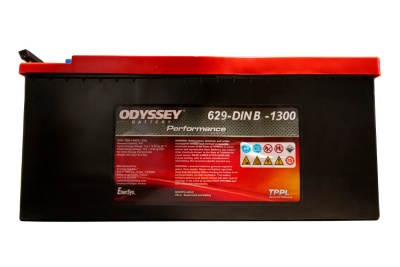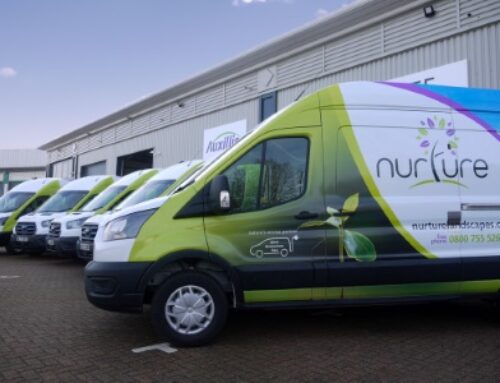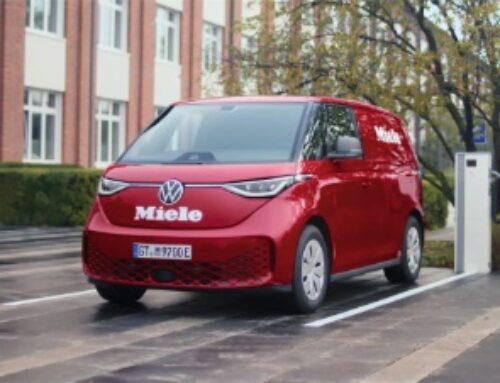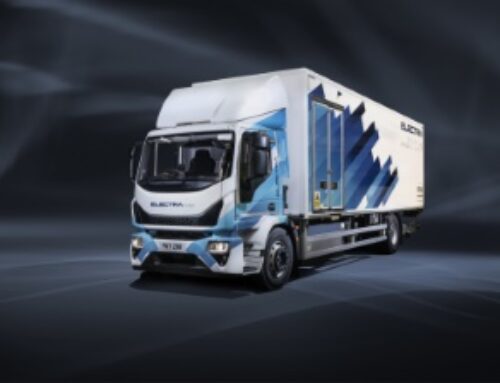Avoiding premature battery failure
 Ecobat offers its take on why batteries fail, and how fleets can tackle the issue
Ecobat offers its take on why batteries fail, and how fleets can tackle the issue
Battery failure has long been the number one cause of CV breakdowns – but with the fact that many companies are now operating on double, or even triple, driver shift patterns, it is not difficult to see why even original equipment (OE) fitment conventional starting, lighting & ignition (SLI) batteries are struggling to cope with the demands of continuous use.
Add the cost of replacing spent batteries, with callout costs and late delivery penalty payments, and it isn’t hard to understand why it’s costing companies thousands of pounds.
Although engine starting currents haven’t significantly changed over the years, the recent surge in electrical demands, means that conventional SLI batteries are failing at a rate not seen before. This is exaggerated further when cabs double-up as hotel rooms as drivers sleep in their trucks overnight, with the battery becoming the sole source of power for cooking, heating, lighting, GPS and charging tablets or laptops etc.
Other factors – such as multiple drops that facilitate the use of the vehicle’s tail lift, which, due to key-out functions enforced by low-emission zones and laws, are powered only by the battery – also have a dramatic effect as it continues to ‘walk down’ in charge available to such a point that starting the engine is compromised.
In addition to the fact that a conventional SLI battery fails to function effectively below 20 per cent state of charge (SOC), it is easy to see why engine starting will be a major problem. The onset of cold weather adds another challenge and heightens the risk that operators will be faced with another callout,  with the inevitable associated costs that will incur.
with the inevitable associated costs that will incur.
The unfortunate truth is that all this inconvenience is as a direct result of relying on an unsuitable battery design, even in its OE form, which is incapable of operating effectively at a low SOC and therefore unable to cope with the demands of modern CV usage, with many failing in as little as eight to 12 months.
What’s the answer?
Thankfully, there is a solution that’s both affordable and provides an extended battery service life: the Odyssey AGM battery.
Engineered with specialist thin plate pure lead (TPPL) technology, which was first used in aerospace and the military, the Odyssey AGM can be discharged to 80 per cent of its capacity, but crucially, will still start the engine and with an inherent fast-charging capability, it means that with this option, battery related breakdowns become a very rare occurrence.
In addition, providing twice the power and three times the life of conventional SLI batteries, they are typically lasting for four years plus, and come with a four-year warranty.
‘Too good to be true, there must be a catch,’ is what many operators may be thinking; and yes, this advanced technology obviously comes with a cost.
However, despite being twice the price of a conventional SLI battery, the Odyssey AGM battery alternative becomes by far the cheapest option when they consider the savings they’ll make in terms of call out costs and unprofitable downtime, as well as providing them with a minimum four-year service life, during which time it’s likely they would have had to replace their conventional SLI batteries three times.
So, the total cost of ownership (TCO), which is the true cost to their business, is considerably reduced.
Additional benefits
Strategically analysing and identifying the problems faced by workshops and fleet operators is the best and most effective way to find solutions, which is why taking the TCO into account is vital for efficient battery management and cost control.
To further assist operators, Enersys, the company that pioneered the development of the AGM (absorbent glass mat) battery and manufactures the Odyssey AGM, has pioneered a new concept that has the potential to revolutionise battery management in the heavy-duty sector. This game-changing innovation has been made by the introduction of a built-in battery monitoring system for its Odyssey AGM Din B batteries.
Using the embedded Connect monitor and the Connect app, the voltage, SOC and crucially, even the state of health (SOH) of the battery can be determined, so preventing a costly failure away from the depot, which would inevitably incur extra costs for repair or, in the worst case, vehicle recovery.
Battery SOH is a particularly useful measure, as it provides a very good indication as to whether the battery is likely to have an issue in colder conditions, for example.
What this development gives to fleet managers is a degree of proactive control that has previously not been possible. This can be achieved by either the engineer in the depot using the Bluetooth connecter app on his computer to check all vehicles in range/onsite, or remotely as they instruct drivers to start their shift by hovering their mobile phone over each of the vehicle’s batteries downloading the information to the app on the phone.
This will log the data, which can then be sent back to the company in various ways – WhatsApp or email, for example – allowing the engineer to look at the individual SOC, SOH and voltage of each battery in every vehicle in the company’s fleet before it leaves the depot, or at any time, from any location.
The full history of each battery – the date fitted, time in service, average voltage – in fact everything that has occurred with the battery from day one, is then at their fingertips.
 As well as providing useful information that could substantiate any warranty claim, for example, it also allows fleet managers to plan any equalising charge requirements that might periodically be required and help them avoid the practice of renewing batteries based on time, in favour of basing it on the facts of the actual condition of the battery, which ensures their lifespan is optimised, saving the company money and helping to discover the ever-important TCO of their batteries.
As well as providing useful information that could substantiate any warranty claim, for example, it also allows fleet managers to plan any equalising charge requirements that might periodically be required and help them avoid the practice of renewing batteries based on time, in favour of basing it on the facts of the actual condition of the battery, which ensures their lifespan is optimised, saving the company money and helping to discover the ever-important TCO of their batteries.
In short, this innovation will revolutionise battery care and maintenance, as engineers and workshop managers will no longer be ‘blind’ to how the batteries are behaving and are likely to perform, as these are no longer unknown quantities.
Although the cost of an Odyssey AGM2 battery with TPPL technology and the Connect monitor is a little more expensive than an enhanced flooded battery, the TCO saving over the life of the battery and the reduction in down time and related penalty costs means the return on investment is immediate, making the extra initial outlay easy to justify.
For those fleet managers still sceptical, it’s worth them taking note that a major European CV manufacturer has been trialling these Odyssey batteries and has now placed its first order, so the revolution is underway and the onus now falls upon fleet operators to act, get on board and start making savings.










